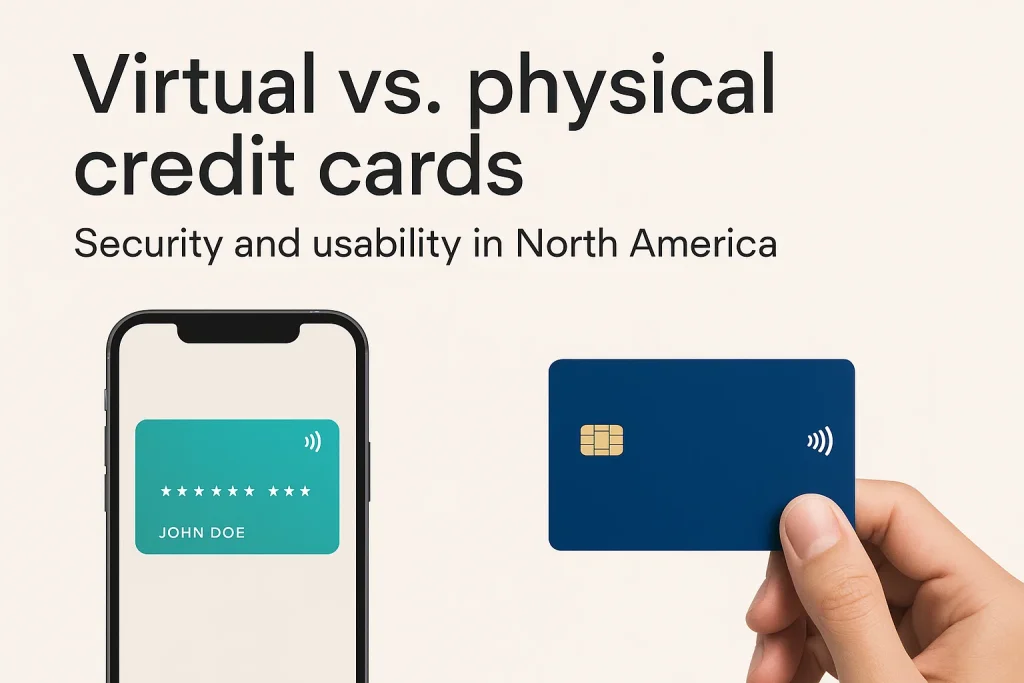In today’s fast-paced digital world, the use of credit cards has become ubiquitous across North America. Whether making quick online purchases or swiping at a physical store, the credit card is a trusted ally. Recently, however, virtual cards have emerged as an alternative, promising enhanced security and greater convenience.
This evolution raises questions about the benefits and downsides of both physical and their digital counterparts. Let’s delve into the nuances of each type, evaluating their security and usability in the modern landscape.
The rise of digital cards

The advent of digital credit cards has created a shift in how consumers manage their financial transactions. These modern tools, generated easily within mobile banking apps, offer an additional layer of security by providing users with temporary numbers that change with each purchase.
This dynamic prevents hackers from accessing permanent details. Coupled with increasing online shopping habits, such cards have become indispensable for protecting sensitive data and minimizing fraud risks. With privacy concerns at an all-time high, virtual cards have quickly gained traction as a reliable way to manage transactions safely.
Security benefits of digital alternatives
Digital cards offer notable security advantages over traditional plastic. By presenting unique card numbers for each transaction or setting spending limits, consumers can significantly reduce their exposure to fraud. Often, even if a virtual card number is compromised, it becomes useless shortly after its intended purchase, leaving cybercriminals empty-handed.
Additionally, with mobile banking’s fingerprint and facial recognition features, unauthorized access is harder than ever. These elements foster peace of mind, reassuring users that their sensitive information remains protected, unlike a typical plastic card left vulnerable to theft or duplication.
The traditional card experience
Despite the digital age advancements, the classic plastic credit card still holds its ground. Its tangible form provides reliability in scenarios where digital cards might face limitations, such as locations without card scanner technology or in some international spaces where virtual options are unsupported.
Physically swiping a card is quick and familiar, giving users a sense of instant transaction confirmation. These cards also often come integrated with added incentives like cashback or rewards points, enhancing their appeal. Hence, the traditional credit card isn’t going anywhere soon, holding as strong as ever alongside its virtual counterpart.
Practical tips for secure usage
Whether opting for traditional or digital forms, using credit cards securely is paramount. For physical cards, keeping contactless features activated can block unauthorized skimming. Regularly monitoring your account for suspicious activities also helps spot fraud early.
For virtual card users, ensuring devices have up-to-date antivirus software can prevent malware from capturing sensitive data. Also, understanding and utilizing your bank’s security notifications can provide another safeguard, alerting you to unusual activity immediately. By taking proactive steps, users can enjoy the convenience of credit cards without compromising security.
Final thoughts on the evolving landscape
In conclusion, both virtual and physical credit cards offer their own unique sets of advantages and challenges, with security and ease of use at the forefront of this discussion. As technology continues to advance, these options may further evolve, each catering to specific consumer needs and preferences.
Adopting practices that leverage the strengths of both physical and digital cards can provide users with a comfortable financial experience. Ultimately, the choice between them comes down to individual priorities, with a keen understanding of how to balance convenience with protection in the ever-changing financial environment.
